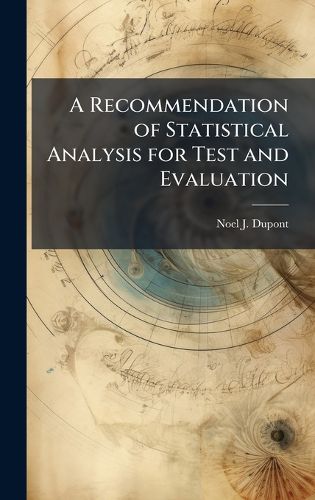Readings Newsletter
Become a Readings Member to make your shopping experience even easier.
Sign in or sign up for free!
You’re not far away from qualifying for FREE standard shipping within Australia
You’ve qualified for FREE standard shipping within Australia
The cart is loading…






This title is printed to order. This book may have been self-published. If so, we cannot guarantee the quality of the content. In the main most books will have gone through the editing process however some may not. We therefore suggest that you be aware of this before ordering this book. If in doubt check either the author or publisher’s details as we are unable to accept any returns unless they are faulty. Please contact us if you have any questions.
This research was intended to provide a consistent analytical approach to test and evaluation procedures for AFOTEC. Particularly, this thesis had a two-pronged focus. The first was a provision of guidance that consisted of a review of key terms and essential steps necessary to achieve sound and accurate system analysis. The second was an upgrade of COBRA software that assists analysts in accomplishing accurate analysis. The analysis and reporting procedure guidance was drawn from an extensive literature review of hypothesis testing and statistical methods used to measure and make inferences about sample parameters. AFOTEC test and evaluation guidelines were also reviewed, specifically the guidance of how test teams should rate measures of performance. The literature review of hypothesis testing and statistical methods were also used to improve COBRA. Finally, a thorough literature review of reliability, key statistical distributions, and confidence bounds were instrumental in COBRA's upgrade. The recommended analysis and reporting procedures were a key result of this research effort. The implementation of the recommended analysis and reporting procedures along with using COBRA as an aid will help to ensure AFOTEC is able to consistently and accurately evaluate the effectiveness and suitability of a system.
This work has been selected by scholars as being culturally important, and is part of the knowledge base of civilization as we know it. This work was reproduced from the original artifact, and remains as true to the original work as possible. Therefore, you will see the original copyright references, library stamps (as most of these works have been housed in our most important libraries around the world), and other notations in the work.
This work is in the public domain in the United States of America, and possibly other nations. Within the United States, you may freely copy and distribute this work, as no entity (individual or corporate) has a copyright on the body of the work.
As a reproduction of a historical artifact, this work may contain missing or blurred pages, poor pictures, errant marks, etc. Scholars believe, and we concur, that this work is important enough to be preserved, reproduced, and made generally available to the public. We appreciate your support of the preservation process, and thank you for being an important part of keeping this knowledge alive and relevant.
$9.00 standard shipping within Australia
FREE standard shipping within Australia for orders over $100.00
Express & International shipping calculated at checkout
This title is printed to order. This book may have been self-published. If so, we cannot guarantee the quality of the content. In the main most books will have gone through the editing process however some may not. We therefore suggest that you be aware of this before ordering this book. If in doubt check either the author or publisher’s details as we are unable to accept any returns unless they are faulty. Please contact us if you have any questions.
This research was intended to provide a consistent analytical approach to test and evaluation procedures for AFOTEC. Particularly, this thesis had a two-pronged focus. The first was a provision of guidance that consisted of a review of key terms and essential steps necessary to achieve sound and accurate system analysis. The second was an upgrade of COBRA software that assists analysts in accomplishing accurate analysis. The analysis and reporting procedure guidance was drawn from an extensive literature review of hypothesis testing and statistical methods used to measure and make inferences about sample parameters. AFOTEC test and evaluation guidelines were also reviewed, specifically the guidance of how test teams should rate measures of performance. The literature review of hypothesis testing and statistical methods were also used to improve COBRA. Finally, a thorough literature review of reliability, key statistical distributions, and confidence bounds were instrumental in COBRA's upgrade. The recommended analysis and reporting procedures were a key result of this research effort. The implementation of the recommended analysis and reporting procedures along with using COBRA as an aid will help to ensure AFOTEC is able to consistently and accurately evaluate the effectiveness and suitability of a system.
This work has been selected by scholars as being culturally important, and is part of the knowledge base of civilization as we know it. This work was reproduced from the original artifact, and remains as true to the original work as possible. Therefore, you will see the original copyright references, library stamps (as most of these works have been housed in our most important libraries around the world), and other notations in the work.
This work is in the public domain in the United States of America, and possibly other nations. Within the United States, you may freely copy and distribute this work, as no entity (individual or corporate) has a copyright on the body of the work.
As a reproduction of a historical artifact, this work may contain missing or blurred pages, poor pictures, errant marks, etc. Scholars believe, and we concur, that this work is important enough to be preserved, reproduced, and made generally available to the public. We appreciate your support of the preservation process, and thank you for being an important part of keeping this knowledge alive and relevant.